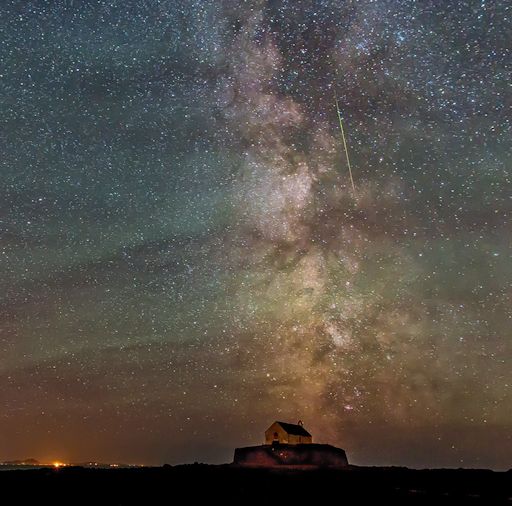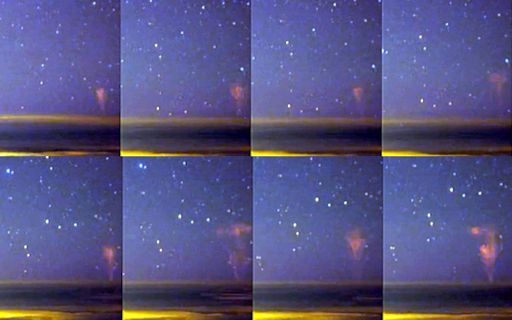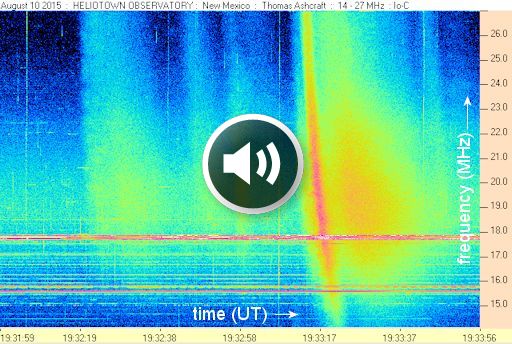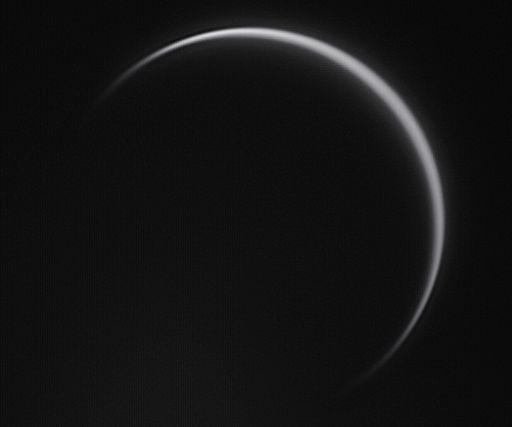Learn to photograph Northern Lights like a pro. Sign up for Peter Rosen's Aurora Photo Courses in Abisko National Park, winner of the TripAdvisor Certificate of Excellence Award 2015. | | |
PERSEID METEOR SHOWER--TONIGHT! The annual Perseid meteor shower is underway. Dusty debris from Comet Swift-Tuttle is hitting the top of Earth's atmosphere at 59+ km/s (130,000 mph) and disintegrating in streaks of light that fly out of the constellation Perseus. On Tuesday morning, Kevin Lewis caught this Perseid streaking down the Milky Way over Cwyfan, Anglesey, UK:

"I was making a deep exposure of the galactic plane on August 11th when the meteor appeared," says Lewis.
Many more could appear tonight. Forecasters expect meteor rates to top 100 per hour on August 12-13 when Earth passes through the heart of Swift-Tuttle's debris stream. The best time to look, no matter where you live, is during the dark hours before dawn when the constellation Perseus is high in the sky. City lights will overwhelm many Perseids. For full effect, go to the countryside where a velvet-dark sky provides the backdrop for a fine display.
Got clouds? You can listen to radar echoes from Perseid meteoroids on [Space Weather Radio.
Realtime Meteor Photo Gallery
SPRITES ABOVE HURRICANE HILDA: On August 10th, the National Weather Service reported an intense outburst of lightning from Hurricane Hilda in the Pacific Ocean. Steve Cullen lives in Waikoloa, Hawaii, where the storm is heading, and when he heard the report he had an idea. Cullen explains: "I wondered if the storm was close enough to be captured by the Canada France Hawaii Telescope CloudCam atop Maunakea. After sunset I logged on to the CloudCam site to check the most recent two-hour timelapse loop, and sure enough, WE HAD SPRITES!!!" Here are some frames from the video:

Sprites are a strange and beautiful form of lightning that shoot up from the tops of electrical storms. They reach all the way up to the edge of space alongside meteors, auroras, and noctilucent clouds. Some researchers believe cosmic rays help trigger sprites, but this is controversial. In short, sprites are a true space weather phenomenon.
As awareness of sprites has increased in recent years, photographers have started to catch them dancing atop ordinary thunderstorms on a regular basis: photo gallery. Seeing sprites above a hurricane, however, is rare. Most hurricanes don't even have regular lightning because the storms lack a key ingredient for electrical activity: vertical winds. (For more information read the Science@NASA article "Electric Hurricanes" by Patrick Barry and Dr.Tony Phillips.) Clearly, Hurricane Hilda is not a typical storm.
Stay tuned for more observations of Hilda's cloudtops as it approaches Hawaii.
Realtime Sprite Photo Gallery
SOLAR RADIO BURSTS: For the past week, solar activity has been low. However, the sun has not been quiet. "I have noted that the sun has been extremely dynamic at shortwave radio wavelengths with almost constant Type III bursting," reports Thomas Ashcraft of New Mexico. He has been hearing loud bursts of static coming from the loudspeaker of his amateur radio telescope whenever he points it at the sun. Click on the dynamic spectrum below to hear a sample:

Type III solar radio bursts are caused by solar flares. Electrons accelerated by strong flares race through the sun's atmosphere, causing a ripple of plasma waves and radio static. Yet, ironically, there have been no strong solar flares. Nevertheless, suggests Ashcraft, "all of the bursting indicates a lot of magnetic complexity and movement in the sunspots."
The biggest sunspot of all, AR2396, is about to rotate off the western edge of the sun. After it departs, the static might subside. Until then, shortwave radio operators should remain alert for solar bursts. The sun is not so quiet, after all. Solar flare alerts: text or voice
Realtime Space Weather Photo Gallery
A SLIVER OF VENUS: On August 15th, Venus will pass almost directly between Earth and the sun--an event astronomers call "inferior solar conjunction." As Venus approaches the sun, the planet is turning its night side toward Earth, reducing its luminous glow to a thin sliver. Damian Peach sends this image of the narrowing crescent from his private observatory in Selsey, UK:

In the days ahead, the crescent of Venus will become increasingly thin and circular. The horns of the crescent might actually touch when the Venus-sun angle is least on August 15th (7.9o). This is arguably the most beautiful time to observe Venus--but also the most perilous. The glare of the nearby sun magnified by a telescope can damage the eyes of anyone looking through the eyepiece.
Anthony J. Cook of the Griffith Observatory has some advice for observers: "I have observed Venus at conjunction, but only from within the shadow of a building, or by adding a mask to the front end of the telescope to fully shadow the optics from direct sunlight. This is tricky with a refractor or a catadioptric, because the optics start at the front end of the tube. Here at Griffith Observatory, I rotate the telescope dome to make sure the lens of the telescope is shaded from direct sunlight, even through it means that the lens will be partially blocked when aimed at Venus. With our Newtonian telescope, I add a curved cardboard mask at the front end of the tube to shadow the primary mirror."
Potential observers should take precautions as outlined above. That said, if you have a GOTO telescope, command it to slew to Venus this evening. The slender cresent is only 12o from the sun on Aug. 8th, and it's a beauty!
Realtime Venus Photo Gallery
Realtime Aurora Photo Gallery
Realtime NLC Photo Gallery
Every night, a network of NASA all-sky cameras scans the skies above the United States for meteoritic fireballs. Automated software maintained by NASA's Meteoroid Environment Office calculates their orbits, velocity, penetration depth in Earth's atmosphere and many other characteristics. Daily results are presented here on Spaceweather.com.
On Aug. 12, 2015, the network reported 195 fireballs.
(121 sporadics, 67 Perseids, 2 Northern delta Aquariids, 2 , 1 Southern iota Aquariid, 1 Southern delta Aquariid, 1 alpha Capricornid)

In this diagram of the inner solar system, all of the fireball orbits intersect at a single point--Earth. The orbits are color-coded by velocity, from slow (red) to fast (blue). [Larger image] [movies]
Potentially Hazardous Asteroids (
PHAs) are space rocks larger than approximately 100m that can come closer to Earth than 0.05 AU. None of the known PHAs is on a collision course with our planet, although astronomers are finding
new ones all the time.
On August 12, 2015 there were potentially hazardous asteroids.
Notes: LD means "Lunar Distance." 1 LD = 384,401 km, the distance between Earth and the Moon. 1 LD also equals 0.00256 AU. MAG is the visual magnitude of the asteroid on the date of closest approach. | | The official U.S. government space weather bureau |
| | The first place to look for information about sundogs, pillars, rainbows and related phenomena. |
| | Researchers call it a "Hubble for the sun." SDO is the most advanced solar observatory ever. |
| | 3D views of the sun from NASA's Solar and Terrestrial Relations Observatory |
| | Realtime and archival images of the Sun from SOHO. |
| | from the NOAA Space Environment Center |
| | the underlying science of space weather |
| | Web-based high school science course with free enrollment |

